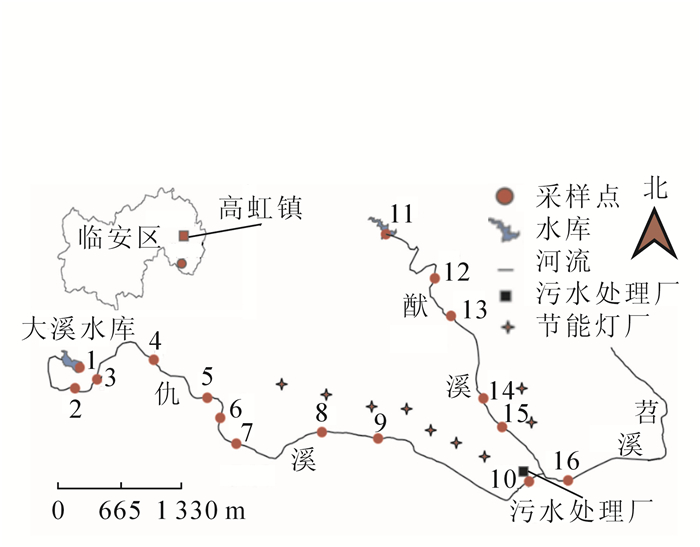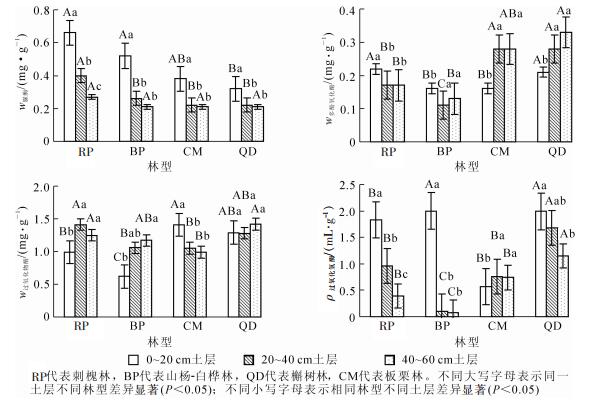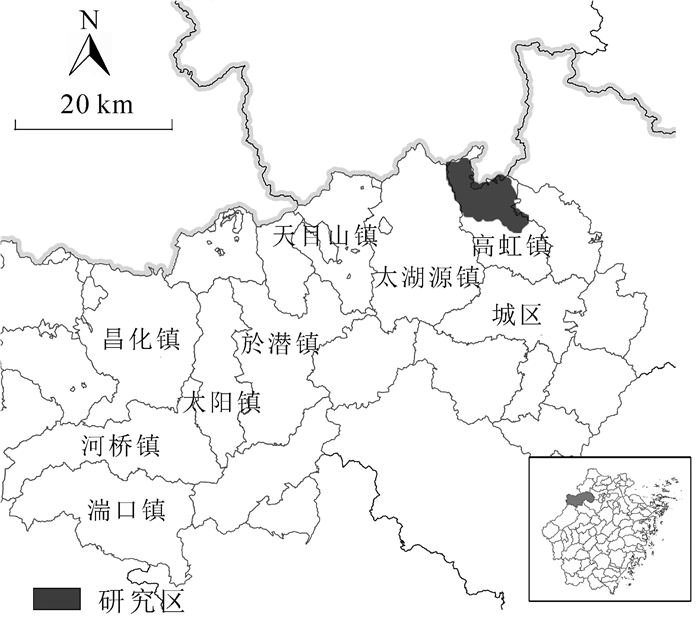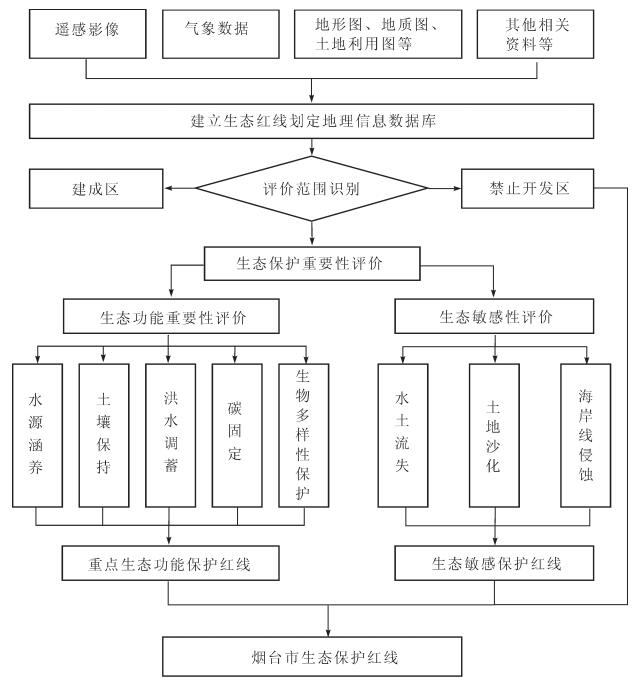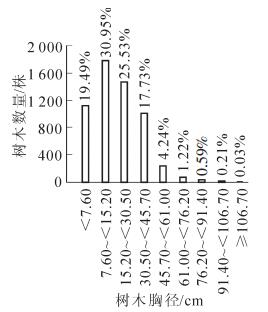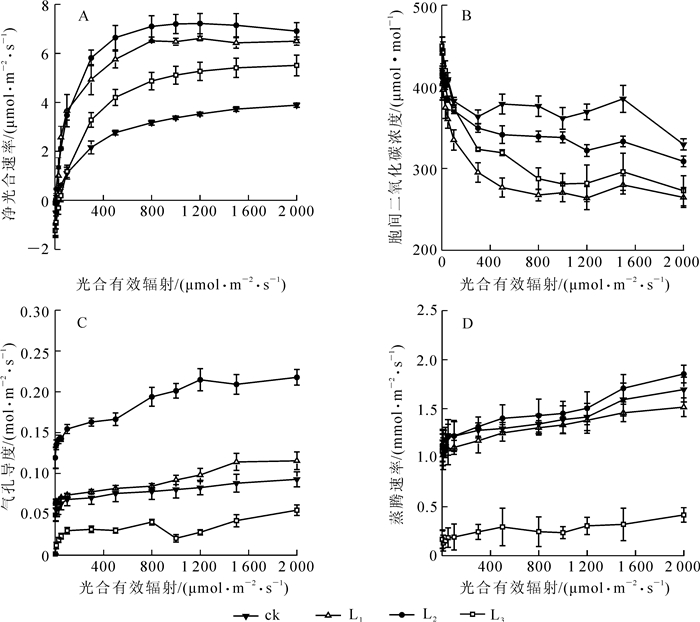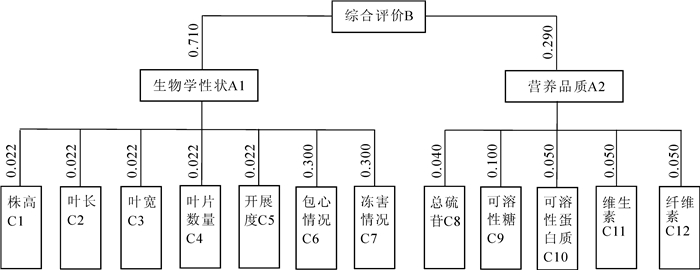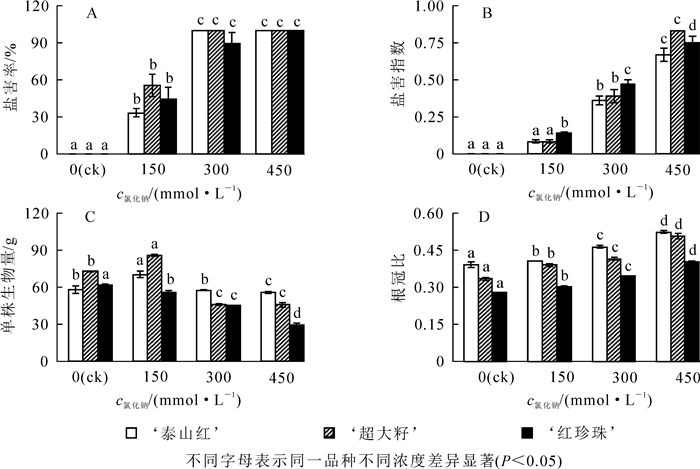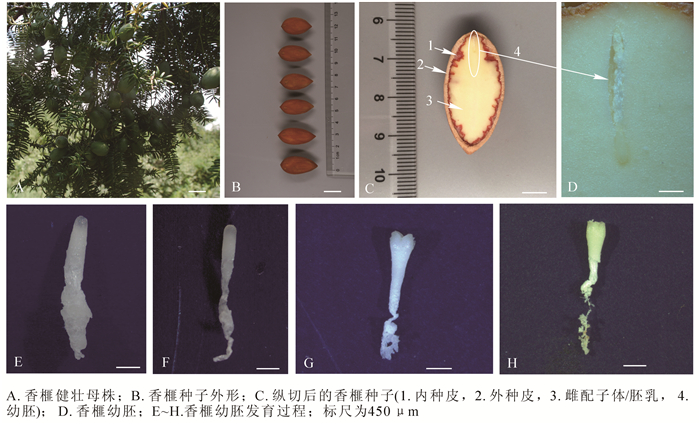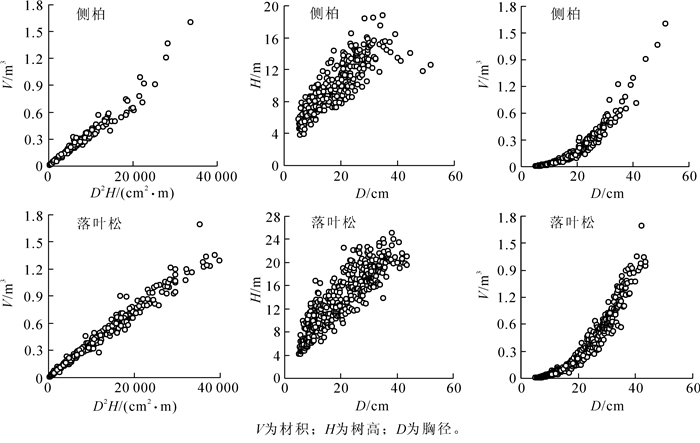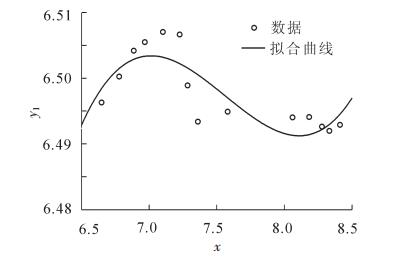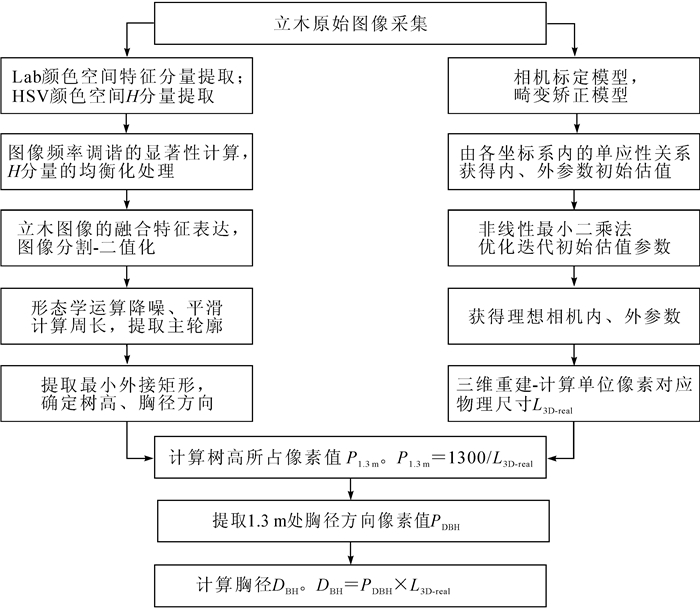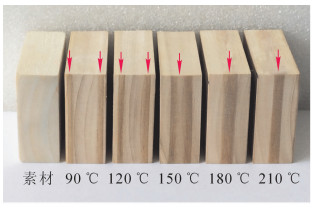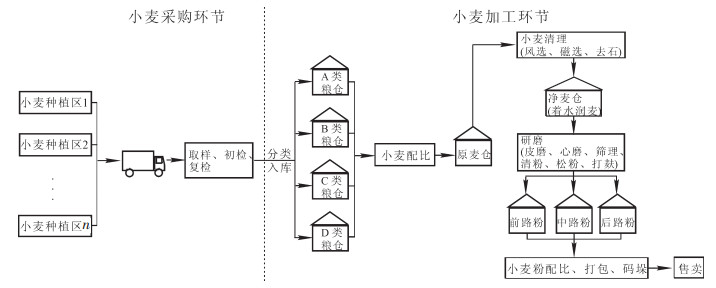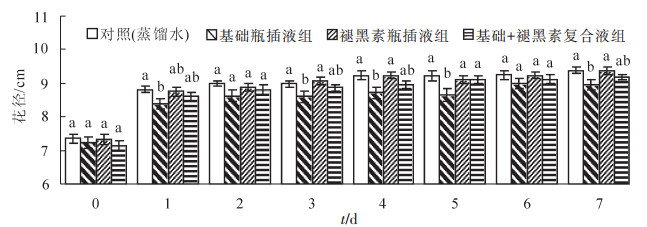2018 Vol. 35, No. 5
To study mercury (Hg) accumulation in aquatic plants and the role of selenium (Se) on Hg accumulation, five kinds of aquatic plants (Paspalum distichum, Echinochloa crusgalli, Acorus tatarinowii, Emilia sonchifolia, and Alternanthera philoxeroides) were collected from the Typical Energy-Saving Lamps Production Area in Gaohong Town, Lin'an District, Hangzhou City, Zhejiang Province. Inorganic Hg (IHg), methylmercury (MeHg), and Se concentrations in different plant tissues were analyzed. Results showed that aquatic plants could accumulated significantly higher (P < 0.01) of MeHg than IHg. The Hg accumulation in different aquatic plants was also different with the bioaccumulation factor (BAF) of IHg in P. distichum for the Hg contaminated area being 18.9 times higher than Echinochloa crusgalli, 37.4 times higher than Acorus tatarinowii, 72.1 times higher than Emilia sonchifolia, and 14.8 times higher than Alternanthera philoxeroides. The BAF of MeHg in P. distichum was 3.2 times higher than Echinochloa crusgalli, 4.2 times higher than Acorus tatarinowii, 40.2 times higher than Emilia sonchifolia, and 3.5 times higher than Alternanthera philoxeroides. The accumulation capability of total Hg in P. distichum for the Hg contaminated area was 11.1 times higher than in a non-contaminated area and for MeHg 3.3 times higher than in the non-contaminated area. Also the presence of Se showed less Hg in roots of aquatic plants meaning selenium could inhibit the accumulation of Hg by aquatic plants, although the correlation between Hg and Se in roots were not significantly correlated (P>0.05). Therefore, Paspalum distichum could be used as a potential species to uptake Hg from Hg contaminated rivers.
To study the relationship between characteristics of soil enzymes and soil physicochemical properties of broadleaf forests in the Beijing mountainous area and to determine the feasibility of using soil enzyme activity as well as kinetic parameters as the evaluation indexes of soil fertility, soil from Robinia pseudoacacia, mixed Betula platyphylla-Populus davidiana, Quercus dentata, and Castanea mollissima, four kinds of broadleaf forests in Beijing, were selected as the research objects. Variance, correlation analysis, and principal component analysis (PCA) were used for analysis of four soil enzymes activity (urease, peroxidase, polyphenol oxidase, and catalase) and kinetic characteristics in the 0-20 cm, 20-40 cm, and 40-60 cm soil depths. Results showed that enzyme activity, maximum rate of enzymatic reaction (Vmax), and the indicator of enzymatic reaction rate (Vmax/Km) (where Km is Michaelis constant) of urease and catalase significantly decreased (P < 0.05) with an increase of soil depth. However, Km had not significant variation. Soil enzymatic reaction efficiency depends not only on enzyme activity but also on its kinetics. Enzyme activity, Vmax, and Vmax/Km of urease as well as enzyme activity and Km of peroxidase could be used to reflect soil fertility in the Beijing mountain forests with other important indexes to evaluate being soil organic matter, total N, available K, available P, and available Fe.
This study was designed to determine the characteristics of nitrogen (N) and phosphorus (P) losses in runoff and sediment with only natural rainfall in a Carya cathayensis stand for a whole hydrological year. The closed zone of a C. cathayensis stand in Lin'an District of Hangzhou setted up a monitoring station for location monitoring was selected to measure total nitrogen (TN), total phosphorus (TP), and dissolved nitrogen (DN) from June 2016 to May 2017 and analyzed. Results showed a significantly positive linear correlation (r=0.940 6, P < 0.05) between runoff and rainfall. During the observation period, the average concentration of N in runoff water was far higher (2.86 mg·L-1) than mass concentration of eutrophication in water. DN in the runoff was a main form of N loss accounting for 60.7% of TN; whereas, the average concentration of P was lower (0.01 mg·L-1) than concentration in other economic forest runoff. There was no significant relationship (P>0.05) between N concentration from runoff and soil available N, but P concentration from the runoff was significantly linearly related to available P (P < 0.05). Accumulated loss of TN in the runoff was 11.01 kg·hm-2·a-1 and TP was 133.70 g·hm-2·a-1; whereas, accumulated loss of TN in the sediment was 11.49 g·hm-2·a-1 and TP was 1.12 g·hm-2·a-1. Thus, in the C. cathayensis stand, rainfall was an important factor affecting runoff with losses of N and P serious.
Water conservation, one of the most important types of ecosystem services, not only reflects the ability of an ecosystem to maintain a water supply, but also shows how much water humans use. Although the InVEST model has been used in China for a long time, there is still a lack of feasibility verification of the results. To verify the feasibility of the model and assist in water source protection planning, evaluation and simulation of water conservation were studied in the Shuitaozhuang Reservoir Watershed. The water conservation capacity of the research area was calculated by monitoring data and by using a comprehensive storage method, and then these two methods were used to verify the correctness of the InVEST Model using a precision analysis and a regression analysis. Results showed that according to monitoring data, in 2015 the total water conservation capacity of the research area was 2 738.31×104 m3; whereas, with the comprehensive storage method the forest water conservation capacity was 3 498.86×104 m3. The InVEST Model calculated that in 2015 the total water conservation was 3 193.90×104 m3, and the forest water conservation capacity was 3 189.73×104 m3. Compared with monitoring data, the accuracy of the InVEST Model was 83.36%. Based on the water conservation capacity of sample points measured by the comprehensive storage method, the InVEST Model simulation value was verified by regression analysis (R2=0.635 4). Thus, the InVEST Model was accurate for this area and could be effective in water conservation to provide a reference for optimization and promotion of forest water conservation in Zhejiang and even subtropical areas.
The ecological red line, an innovation of China's ecological and environmental protection system that is not only closely related to the construction of an ecological civilization system for China, but is also related to the sustainable development of the economy and society, has been proposed with scholars conducting research on its delineation using different methods to carry out pilot work. This study was undertaken to define the ecological protection red line from the municipal point of view and to provide a reference for its demarcation in Yantai, Shandong Province. ENVI and Arc GIS were the main means to assess ecological protection in terms of ecological functions and ecological sensitivity in light of the coastal hilly region characteristics. An expert scoring method to determine weights and a spatial superposition analysis method were used to analyze the evaluation results. An index system for evaluating the importance of municipal ecological protection was established, as far as possible, to evaluate the importance of the ecological function from the standpoint of water conservation, soil conservation, flood water storage, climate regulation function, and biodiversity conservation function from the perspective of the quantity of natural resources, and to explore a technical method for demarcating the municipal ecological red line with Arc GIS as the main platform. Also, an ecological sensitivity assessment included soil erosion, land desertification, and shoreline erosion. Results divided Yantai as an ecological red line and three levels of control areas. The final ecological red line area was 3 432.49 km2 accounting for 24.97% of the total city area, mainly includes the central mountainous region, the southern region and the coastal zone. The ecological importance and ecological sensitivity are high in these area. The method system established in this study has certain practicality and can provide reference for other regions.
To provide a scientific basis for building a carbon-efficient urban forest, a detailed study of the plant species and community structure, based on work done at the Hangzhou Huagangguanyu Park, was conducted using i-Tree model Eco V 6.0 to evaluate the carbon storage function value of the park. Referred to i-Tree model user's manual, a systematic survey was done with per-wood survey method for the data required by the study. Evaluation also included use of the Margalef index and the Simpson index. Results showed (1) a total of 5 726 trees in the study area belonging to 43 families, 79 genera, and 119 species. Five types of dominant tree species, including Osmanthus fragrans, Camellia japonica, Acer palmatum, Metasequoia glyptostroboides, and Magnolia grandiflora, in total of 2 386 trees, accounted for 41.70%. Evergreen species in the garden accounted for 52.17% and deciduous species 47.83%; broadleaf species accounted for 86.74% and coniferous species 13.26%. Most trees in the park were in the DBH range of about 7.60- < 15.20 cm and were mainly distributed in the middle. The overall Margalef index for the park was 13.64, and the Simpson index was 0.95. (2) Carbon sequestration for the park in 2016 was about 54.95 tons, worth 65.9 thousands Renminbi Yuan, and the total carbon storage was about 806.90 tons, worth 968.28 million Renminbi Yuan. Trees with a DBH ≥ 30.00 cm accounted for 24.54% of all garden trees, and had a carbon content of about 58.51% of the total park. Tree species with the strongest carbon sequestration in the park were Cinnamomum camphora, Pterocarya stenoptera, and Magnolia grandiflora. Overall, compared to 12 North American cities, Huagangguanyu Park had a high carbon sequestration rate.
To study the response characteristics of photosynthetic parameters and the antioxidant enzyme system in Dicranopteris dichotoma, different layers of shade netting in a greenhouse were simulated for four kinds of light environment (shade treatments of 0%, 4.75%, 13.00%, and 35.96% of the full light treatment or zero, one, two, and three layers of netting) to measure the effects of the photosynthetic response process, gas-exchange, antioxidant enzyme activity, soluble protein content, and malondialdehyde (MDA) content of potted D. dichotoma. Results were as follows:(1) when the light intensity increased the maximum net photosynthetic rate, light compensation point, light saturation point, dark respiration rate, and apparent quantum efficiency increased first and then decreased. The net photosynthetic rate was highest at the 13.00% of full light treatment. Compared to the control group, the light saturation point, light compensation point, and apparent quantum efficiency with 4.75% of the full light treatment were the lowest. (2) For the four light gradients, the 35.96% of full light treatment was a turning point from stomatal factors to non-stomatal limiting factors; whereas, the net photosynthetic rate, transpiration rate, stomatal conductance, and stomatal limitation value with the 13.00% of full light treatment was maximum. (3) The soluble protein content was 722.27 μg·g-1, and the MDA content was 7.74 mmol·g-1 with both reaching maximum in full sunlight; moreover, these two parameters synergized well with antioxidant enzymes to keep growth normal. Thus, resistance to light stress with potted D. dichotoma could be enhanced by adjusting the content of soluble protein and MDA, the activities of antioxidant enzymes, and physiological parameters with different light environments.
In order to analyze the adaptability of different Chinese cabbage cultivars in Zhejiang climatic conditions, eight Chinese cabbage (Brassica rapa ssp. pekinensis) cultivars were used to compare their biological characteristics (plant height, leaf length, leaf width, number of blades, spread degree, wrap condition, and frozen injury) as well as nutritional quality (soluble sugar, soluble protein, vitamin C, cellulose, and glucosinolates) differences. Biological characteristics were obtained by ruler etc and analysis of nutritional quality were performed according to the methods from references. Each sample was analyzed three times and each experiment was conducted in triplicate (n=3). The results were expressed as means ±SE. Statistical comparisons were made by one-way analysis of variance (ANOVA) followed by Duncan's multiple range test (P=0.05). Results showed that Brassica rapa ssp. pekinensis 'Juhongxin' had the highest blade development (45.2 cm) and the highest protein content. 'Yifengjuhongxin' had the highest number of leaves (21.2 pieces) and was the tallest (23.2 cm). 'Hongshengbai 2' had the longest leaves (27.2 cm), the highest vitamin C (208.1 mg·g-1) and cellulose content (122.1 mg·g-1), but its frost damage was serious (87.18%). 'Xiakangwang' had the widest leaf width (22.2 cm), the highest heading rate (86.67%), and a high head compactness. 'Jujin' had the highest levels of soluble sugar (225.9 mg·g-1), total glucosinolate (13.211 μmol·g-1), indole glucosinolate (1.843 μmol·g-1), and aliphatic glucosinolate content (6.751 μmol·g-1); whereas, the highest content of aromatic glucosinolate was found in 'Chunxiaohuang Wawacai' (0.750 μmol·g-1). The highest value with the membership function method for biological characteristics and nutritional quality was 'Xiakangwang' (0.067) followed by 'Gailiang Xinxiayang' (0.062), with the lowest being 'Chunxiaohuang Wawacai' (0.036). Therefore, the most suitable among these eight cultivars for cultivation in Zhejiang was 'Xiakangwang' followed by 'Gailiang Xinxiayang'.
To choose suitable indexes for evaluating salt resistance in pomegranates (Punica granatum), cuttings from three pomegranates cultivars:'Tanshanhong', 'Chaodazi', and 'Hongzhenzhu' were selected as materials. Effects on growth, physiological, and biochemical indexes were observed after CRD design treatments of 0, 150, 300, and 450 mmol·L-1 NaCl, each block was 5 pots and 3 replications. The analysis of variance (ANOVA) and Duncan multiple comparison were determined at P=0.05 level. Results showed that biomass of 'Tanshanhong' and 'Chaodazi' increased by 21% and 18% at low salinity (150 mmol·L-1), but that of 'Hongzhenzhu' decreased. With the increased NaCl concentration, salt injury was aggravated; chlorophyll content decreased; proline, malondialdehyde, and Na+ content increased; soluble protein content of the three cultivars all first decreased and then increased; the activities of superoxide dismutase (SOD), catalase (CAT), and K+ content first rose and then dropped with maximums at 300 mmol·L-1 NaCl; and K+/Na+ was greater than 1 at moderate salinity level (≤ 300 mmol·L-1). Thus, pomegranates could alleviate salt stress by increasing the content of osmoregulating substances and improving antioxidant enzyme activities in moderate salinity with seven crucial indexes for evaluating pomegranate salt tolerance being biomass, salt injury index, SOD, K+/Na+, Na+, K+, and MDA content.
To obtain high embryogenic frequency in the immature embryo developmental stage, immature embryos of Torreya grandis 'Merrillii' from seeds (8 to 15 weeks after ovule breakthrough from the scales) were sampled as explants to optimize the best developmental stage for somatic embryogenesis. Endogenous Indole-3-acetic Acid (IAA) and Abscisic Acid (ABA) of immature embryos were also analyzed using enzyme-linked immunosorbent assay (ELISA) method. Results showed that the embryogenic callus frequency (up to 48.3%) and direct somatic embryogenesis frequency (up to 42.7%) were highest with immature embryos from seeds at 9 weeks after scale breakthrough on Schenk and Hilderbrandt (SH) basal medium supplemented with 0.1 mg·L-1 1-Naphthaleneacetic acid (NAA). In vitro germination frequency was highest (up to 65.1%) with immature embryos from seeds at 14 weeks after scale breakthrough. Significant differences (P < 0.05) among development stages of different immature embryos were found. With the development of immature embryos, endogenous IAA decreased gradually being highest with immature embryos from seeds at 8 weeks after scale breakthrough[up to 53.90 ng·g-1 fresh weight (FW)]. Meanwhile, endogenous ABA initially decreased followed by a rapid increase with the highest content being 160.20 ng·g-1 FW for immature embryos from seeds at 15 weeks after scale breakthrough. This study revealed that with immature embryos of seeds from 8 to 12 weeks, embryogenic frequency was high which could help optimize embryogenic callus induction and somatic embryo genesis in Torreya grandis 'Merrillii'.
A volume table with calculations based on a volume equation, is an important tool for estimating tree volume in forest resources inventory. To overcome the large total relative error (TRE) that sometimes occurs, making the volume tables unable to meet the precision requirements of forest surveys and production, a Quantum-Behaved Particle Swarm Optimization (QPSO)-Least Squares Support Vector Machines (LSSVM) Model was used to estimate the volume of Platycladus orientalis and Larix principis-rupprechtii in Beijing. The traditional method of analyzing cut trees and the method of electronic theodolite standing timber volume were used to measure diameter at breast height (DBH), tree height, and volume of small diameter class (6-10 cm) and large diameter classe (12 cm or more) were used. A total of 792 trees were collected, including 344 P. orientalis and 448 L. principis-rupprechtii. Then, one-variable and two-variable tree volume equations of P. orientalis and L. principis-rupprechtii were established based on the QPSO-LSSVM algorithm. Also the volume model was established using the traditional empirical volume equation, BP neural network, and the PSO-LSSVM algorithm to test comprehensive performance indexes such as estimate accuracy, convergence speed, and robustness. The sample data set was divided into train set and test set according diameter class in the experiment. There were 250 train set samples of Platycladus orientalis, accounting for 72.67% of the total number, and 94 test set samples of it. Also, there were 300 train set samples of Larix principis-rupprechtii, accounting for 66.96% of the total number, and 148 test set samples of it. Results of the regression analysis on the improved one-variable and two-variable tree volume equations of P. orientalis and L. principis-rupprechtii showed R2 (the coefficient of determination of the test sets)=0.978 6, 0.946 1, 0.987 0, and 0.990 1, with the TRE of 0.75%, -0.16%, 0.64%, and -0.50%, all within ±1%. The QPSO-LSSVM has higher comprehensive performance indexes for the volume equation than the other three volume equations, including traditional empirical volume equation, BP neural network and the PSO-LSSVM algorithm. Thus, the proposed QPSO-LSSVM method should have a favorable application prospect with high precision volume estimates.
To quantitatively analyze the characteristics of a forest spatial layout so as to optimize its ecosystem structure, a Pinus tabulaeformis plantation in Badaling, Beijing was studied. The number of adjacent trees for each central tree was confirmed using Delaunay triangulation, the Voronoi diagram, and GIS methods. Next, the forest spatial structural unit was determined with four parameters for each unit being calculated based on the Voronoi diagram:the aggregation index, the degree of mixing, neighborhood comparison, and the degree of openness. Then data was collected in each forest spatial structure with informatization. Results showed that creating a spatial structural unit using the Voronoi diagram was reasonable. The way is different from the method which fixes the number of the unit sides with 4. The number of adjacent trees was 3-11 with the most common number being six. Nine kinds of spatial structural units were found with a different number of sides. According to the statistical results, the parameters of the spatial structure in the study area did not have a normal distribution. Also, the aggregation index of the spatial structure was 1, or a general state of aggregation. Living space in the forest was sufficient because the average data for the degree of openness was 0.52. Moreover, the average neighborhood comparison for the whole study area was 0.53 which meant a general state with common competition even though the competitive ability of P. tabulaeformis was strong. Tree species were unevenly distributed with an average mixed degree of 0.25 for Pinus tabulaeformis, the poorest, with other species being better. In general, isolation of tree species was poor, and stability of the whole forest was weak.
In order to better develop the forest industry, make rational use of forest resources and provide a reference for forestry development, the research drew on the assumption of environmental Kuznets curve (EKC) model and used the relevant time series data of Zhejiang Province between 2001 and 2015 to build a mathematical model. The forest resources were measured by forest land area, and forest stock; the forestry industry was measured by forestry total production. Based on basic EKC quantitative model, the research conducted stationary test and co-integration test of the data. The research findings indicated that the co-integration relationship existed between forestry total production and forest land area, forest stock relatively. Then on this basis, forest land area and forest stock were respectively compared with forestry total production, and made regression analysis. The analysis found the fitting effect was good. The results showed that the curves of forest land area and forestry total production, forest stock and forestry total production both showed N-shaped, but the trends were slightly different. The trend of forest land area and forestry total production was "increase-decrease-increase", while the forest stock and forestry total production was "increase-gently increase-increase". On the whole, the current forest resources and forestry industry tend to have benign interaction and they are about to enter into the new stage of mutual benefits.
Aiming at the problems of high labor intensity and low efficiency, complicated operation and high cost of advanced equipment in the measurement of DBH in existing traditional forest resources, and proposing a method for measuring diameter at breast height (DBH) based on smartphone and machine vision technology, and combining with camera calibration, 3D reconstruction, machine vision, close-range photogrammetry, and other technologies. First, The original image is obtained by smartphone, and the visual saliency map of the preprocessed image is processing by using the lab color space model and 3×3 operator to convolving with image. Combining with the H component of the HSV (Hue, Saturation, Value) color model to enhance the color contrast part of the tree trunk in the image. The image segmentation algorithm is used to identify and obtain the target tree's contour in a natural environment. Then, an improved camera calibration model with nonlinear distortion terms is used to calibrate the camera's internal and external parameters. Finally, achieving reconstruction of a 3D world with camera parameters and two-dimensional image information is carried out to measure DBH at a height of 1.3 m. Experimental results indicated that within a certain range, the relative error of the DBH measurements was lower than 2.50%. This method has a high measurement accuracy, meeting the accuracy requirement of DBH measurement in forest resources investigation and could be applied in forestry resource surveys.
In order to help the public to recognize ornamental plants on the campus, an APP (application) used for recognition of ornamental plants by utilizing the laminas was designed based on the iOS operating system. The local SQLite database was established to store the feature data of the laminas and the attribute information of the plants related to campus culture. The images of the laminas of the plants were acquired by taking photos with iPhone, which were then converted to grey-scale maps. The OTSU method was utilized to segment regions for the laminas, and 10 features of the laminas such as color, shape and texture were extracted. The laminas were then recognized with the support vector machines (SVM) classifier, and corresponding image and text information were displayed on iPhone. According to research findings, the average recognition rate of laminas of the 8 selected ornamental plants was 92 per cent, with average recognition time of 2.6 s. The system is simple and convenient, providing a method for realizing automatic mobile recognition of campus ornamental plants based on laminas. In addition, it gives full play to scientific values and unique humanistic values of ornamental plants on the campus.
The tourist area life cycle theory (TALC) is the most important fundamental theory of tourism subject. The research used the tourist area life cycle theory and selected Mount Tianmu Nature Reserve and Foping Nature Reserve as research sites to conduct field surveys and data analysis. The study found that there were significant differences in residents' perception of and attitudes toward tourism impacts at the different stages of the life cycle of tourism. Compared with the residents in Mount Tianmu Nature Reserve at the development stage, residents in Foping Nature Reserve at the participation stage showed a higher support for tourism development and perceived more social benefits and less environmental impacts and community interpersonal impacts. It indicated that residents in these two reserves had different tolerances of negative impacts caused by tourism development due to different stages of life cycle. Finally, this article explored the determinants of residents' support for tourism development. In Foping Nature Reserve, perceived social and economic benefits significantly improved residents' support for tourism development, while perceived impacts of environmental change and community interpersonal relationships were significantly negative; In Tianmu Mountain Nature Reserve, the perception of social benefits and environmental impacts have no significant effects on residents' support for tourism development.
This study took four sanatoriums in Hangzhou as the research objects and used analytic hierarchy process (AHP) method to construct the evaluation index system of therapeutic landscape environment in sanatoriums. The index system aimed to evaluate 5 objectives including the variety of therapeutic landscape space, the humanization of recreational facilities, the convenience of road traffic, the richness of plant therapeutic landscape and the human perception, with 24 evaluation factors. Then the study analyzed the subjective evaluation results of rehabilitation landscape environment with semantic differential (SD) method. The results showed that the comprehensive grading of therapeutic landscape in four sanatoriums was as follows:Army Sanatorium (0.737), Air Sanatorium (0.712), Wang Jiangshan Sanatorium (0.622) and Weapon Group Sanatorium (0.601). This study proposed the rehabilitation landscape optimization suggestions for the evaluation objective.
To explore the structural characteristics of wood and its volatile organic compounds for the purpose of scientific and objective evaluation, as well as for offering an important basis for reasonable and further exploitation of the resource, Lindera megaphylla was studied in Ya'an City, Sichuan Province. First, the macroscopic and microscopic structure of L. megaphylla were observed, and then the morphological parameters and tissue proportion of vessels, wood fibers, wood rays, and longitudinal parenchyma were measured and analyzed. Meanwhile, gas chromatography-mass spectrometry (GC-MS) technology was applied to analyze the chemical components of the volatile organic compounds. Results indicated structural characteristics of L. megaphylla included diffuse porous wood, a few pores, vessels and wood fibers having medium length, multiseriate rays with widths ranging from thin to medium level, and a small number of longitudinal parenchyma. The tissue proportions were as follows:wood fibers-52.7%, wood rays-24.6%, vessels-13.2%, and longitudinal parenchyma-9.5%. In the volatile organic compounds of L. megaphylla, 39 peaks were separated. Altogether, 23 types of compounds, accounting for 87.11% of the total composition and being mainly composed of hydrocarbons and oxygenated derivatives, were identified. Among the volatile organic compounds, 13 kinds had more than 1% of the total components in relative content accounting for 80.22% of the total peak area. The main volatile organic compounds contained 18 kinds of terpenoids and were all sesquiterpenoid compounds with a total relative content of 58.63%. Thus, structural characteristics of L. megaphylla could distinguish it from other species of wood, and analysis of volatile organic compounds showed that its wood had a high medical utilization value and great potential for application in aromatherapy products.
Changes in the position of compressed wood layers make the structure of sandwich compressed wood formed at different preheating temperatures vary with different structures affecting mechanical properties. In order to know how the structure of sandwich compressed wood affect its mechanical properties flat-sawn lumbers (thickness:25 mm) of Chinese white poplar (Populus tomentosa) were soaked in water and preheated on the hot plate at different temperatures as 90, 120, 150, 180 and 210℃, respectively. Then sandwich compressed woods with different structures were obtained. With an increase in preheating temperature, the position of the compressed layers moved gradually from the surface to the center layer. Analysis of the surface hardness, hardness, modulus of elasticity (MOE), and modulus of rupture (MOR) of the sandwich compressed wood was conducted. Results showed that (1) As preheating temperature increased, highly significant (F test, P < 0.01) surface hardness increases were found with a rate of increase of 3.9%-57.2% compared with that of untreated poplar wood. At the same time, decreases in hardness were highly significant (F test, P < 0.001) with the rate of increase of 8.6%-38.5% compared with that of untreated poplar wood. This was closely related to the effect of high temperatures and the change of average density for 0.32 and 2.82 mm thick wood in surface layers caused by compressed layers that were moved from the surface to the center layer as preheating temperature increased. (2) As preheating temperature increased, MOE and MOR changed but there were not significant differences (F test, P>0.05). All experimental results showed that mechanical properties of sandwich compressed woods were influenced mainly by their structure and then by the preheating temperature. Thus, sandwich compressed wood with better mechanical properties could be obtained by controlling compressed layers in surface layers and increasing the density of the compressed layers.
To improve the overall utilization of wheat flour processing equipment and wheat flour production efficiency, production data, based on research of a single production line in a wheat flour enterprise, was collected. Then, combined with system modeling and simulation technology, a wheat flour processing model for a single production line using Flexsim simulation software was established. Results showed a low utilization rate leading to high equipment blockage rates for the wheat cleaning machine (24.1%) and the flour milling machine(26.9%). Based on this, an improved plan and optimized simulation model were proposed which decreased equipment blocking rates to 13.5% for the wheat cleaning machine and 15.6% the flour milling machine. Using the improved plan, wheat flour production increased from 10 645 to 21 290(50 kg bagged flour), and the overall utilization rate of wheat flour processing equipment was greatly improved.
In order to address the problems such as low efficiency, sticky and slippery workshop floor, and waste of saponin caused by artificial leaching of Sapindus mukorossi pericarps after extraction, a new water filter for the S. mukorossi pericarp after extraction was introduced. The study proposed a "two-way rotation" as the core concept of the new device structure. To verify the feasibility of the design scheme, a theoretical analysis and a kinematics analysis of water filtering process were carried out. This study also used the prototype made with additive manufacturing to execute the performance test according to the functional requirements. The analyses and test results showed that the device structure was simple, reliable and practical. In addition, the design of agitating blades with an axial drift angle α < 90° reduced the probability of pericarps build-up. Moreover, the average water filtration rate of the device could reach 45.83% and the average discharge rate could reach over 85%, both meeting the design requirements. Therefore, the device can not only realize the separation of the mixture of S. mukorossi pericarps and saponin, and the reuse of the mixture of saponin, but also improve the extraction rate of S. mukorossi saponin, which makes it easier to carry out subsequent drying process and promotes the mechanization of S. mukorossi processing industry.
Natural regeneration of forests is a complex ecological process which ensures the reproduction of the population and maintains the structure stability of forests communities. It is a hot issue of forest ecology playing an ecosystem management mode, people gradually began to emphasize the stable forest ecosystem and natural important role in forest dynamic. But with the change of forest management to multi-objectives and process, researchers began to pay attention to the natural regeneration process. In this review, we discussed the manners, and studied the effect of disturbances including fire, wood harvesting and forest gap. The most current studies of forest regeneration were based on descriptive analysis of natural regeneration from field data and phenomena, and few findings revealed the mechanisms of forest natural regeneration in terms of physiology and ecology. The research subjects mainly focused on forest types, restricted to forest gap renewal and species groups in forest communities. Insufficient attention has been paid to the regeneration of forest in frequent disturbance, and the countermeasures to promote the regeneration of natural regeneration species were insufficient. The scale of forest natural regeneration should be expanded and deepened. In studies of forest natural regeneration, researchers should strengthen the following aspects:(1) the role of various factors should be studied synthetically; (2) the scale of research should be extended; (3) the physiological mechanism and ecological function should be studied; (4) emphasis should be placed on increasing the regeneration of difficult species, the regeneration of endangered species and ecologically fragile areas; (5) physiological responses of seed seedlings to elevated CO2 and changes in hydrothermal conditions should be carried out; (6) study on the effects of various types, intensities and frequency interference on seed seedlings should be enhanced; (7) study on the relationship between the regeneration of forest community and biodiversity to further reveal the update of forest community should be enhanced. In conclusion, this paper summarized the current situation and problems of natural forest regeneration, and put forward some suggestions for future research, which can provide the theoretical basis for forest management and ecological restoration, and provide reference for the protection of climate change, forestry production of rare and endangered plants. Meanwhile, the work has important significance on sustainable development of forests, the balance of the ecological system and the conservation of biological diversity.
Stable isotope technology can be used in forest product traceability and adulteration detection. Combined with LDA-PCA, the isotope ratios (13C/12C, D/H, 18O/16O, 15N/14N) were able to trace the geographical origin of kiwifruit, sweet cherries and extra-virgin olive oils. Stable carbon isotope was applied to authentication of fruit juice, health products and flavours by IRMS, HPLC-IRMS or GC-IRMS. Stable nitrogen isotope can verify the organic product. Based on the research of forest and organic product traceability and adulteration detection, this paper summarized the theory of stable isotope technology and application of stable isotope in forestry adulteration detection and trace ability. This paper aims to promote the application of stable isotope technology and to improve the method of adulteration detection and traceability in forest product.
To study the effect of basic mediums and plant hormones on callus induction, proliferation, and differentiation with Acer yangjuechi, stems and leaves were used as the explants. Data analysis included variance analysis and poor analysis. Results showed that the optimal explant for callus induction was stems. Basic medium and a proper phytohormone ratio both promoted callus induction, proliferation, and differentiation. The optimum medium for induction was woody plant medium (WPM). The effect of 6-benzylaminopurine (BA) on callus induction was better than 1-naphthaleneacetic acid (NAA) and kinetin (KT). Data analysis of the experimental results showed that the best medium for callus induction was WPM + 0.3 mg·L-1 NAA + 0.5 mg·L-1 KT + 0.5 mg·L-1 6-BA. The best medium for callus proliferation was WPM + 1.0 mg·L-1 6-BA + 0.1 mg·L-1 NAA. Thidiazuron (TDZ) played an important role in differentiation with the medium WPM + 1.0 mg·L-1 6-BA + 0.1 mg·L-1 NAA + 1.5 mg·L-1 TDZ, promoting callus to produce the largest number of adventitious buds.
To determine the influence of melatonin (MT, N-acetyl-5-methoxytryptamine) in keeping roses fresh, cut rose flowers (Rosa hybrida 'Corolla') were selected as experimental materials with MT added to the preservation solution, and the treatments were as following:control (ck, distilled water), 20 μmol·L-1 MT solution, base fluid (30 g·kg-1 sucrose + 250 mg·L-1 8-hydroxyquinoline + 200 mg·L-1 citric acid), 20 μmol·L-1 MT + base fluid. Results showed that compared to ck, 20 μmol·L-1 MT + base fluid preservation solution significantly increased the diameter of the blossom and the water balance value of cut flowers as it slowed decline in the change rate of its fresh weight (P < 0.05). Moreover, addition of MT inhibited bacterial growth in the base fluids. Thus, the liquid mixture of base fluid with 20 μmol·L-1 MT preservation solution, was the most effective preservative solution in this study.




